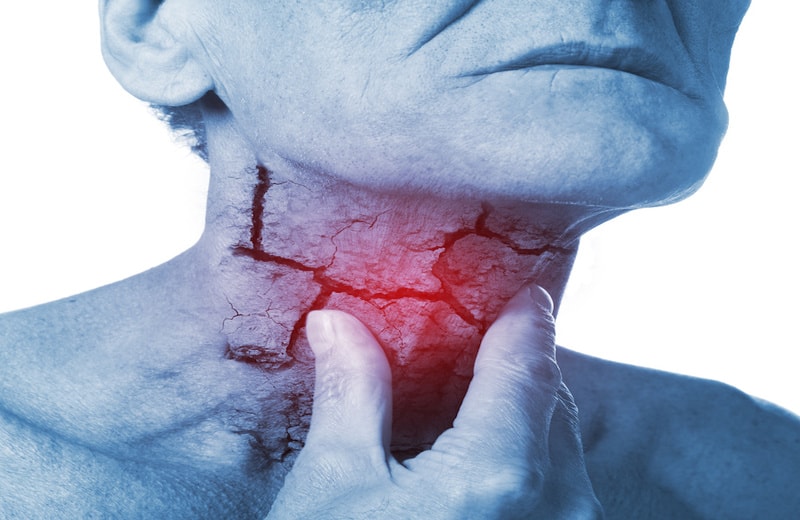Strep throat is an infection caused by bacteria known as Streptococcus pyogenes, which live in your throat and nose. The condition affects your throat and tonsils. Typically, it is characterized by throat pain and inflammation. Although the condition is common among teens and children, it can also affect adults.
One good thing about strep throat is that it is curable. However, if it is not diagnosed and treated in time, it may lead to various complications, including rheumatic fever and kidney inflammation. To avoid any complications, it is advisable to seek medical attention immediately once the symptoms of the condition begin to show up.

1. Coughing
Coughing is an involuntary reflex action through which you clean your throat by removing foreign irritants or mucus. While it can be a symptom of a serious underlying infection or illness, it may not indicate any serious problem in some cases. It causes strep throat by releasing respiratory droplets that contain Streptococcus pyogenes into the air. Remember, these bacteria live in the throat of the infected person. When the patent coughs, the air from his gut dislodges them from the throat. Inhaling the infected air allows the bacteria to enter your throat and tonsils, causing the infection.
To prevent the infection resulting from coughing, it is advisable to stay away from people who are infected. If you suspect that the air in your room may be contaminated with the bacteria, proper ventilation may also help. You need to open your windows and doors to let the infected air out. As a back-up precaution, you may need to visit your physician for a check-up just to be on the safe side. Remember, strep throat may fail to depict any signs, especially, if you are a carrier. Therefore, seeking treatment even if you are a carrier is a smart way of protecting your children and other people from infection.
2. Sneezing
Sneezing refers to an involuntary and powerful expulsion of air from your lungs. Just like coughing, it is a way through which your body eliminates mucus and foreign irritants from the throat and nose. Sneezing causes strep throat the same way coughing does. When a person infected with Streptococcus pyogenes bacteria sneezes, the droplets that carry the bacteria are released into the air. When you inhale the contaminated air through your mouth or nose, you become infected and may start experiencing the signs and symptoms of the infection. Staying away from an infected person is one simple way to avoid infection through contaminated air.
3. Shared Food
Food acts as a medium of Streptococcus pyogenes bacteria transmission. When a person infected with these bacteria bites food, the bacteria are likely to be deposited on it. Eating the infected food allows the bacteria to enter your throat and tonsils, leading to strep throat. Another way you can be infected through shared food is sharing food utensils such as spoons, dishes, and plates.
To prevent Streptococcus pyogenes infection through contaminated food, you need to avoid sharing food with other people even if you are not sure they are infected. Remember, some people are carriers and may not show any signs and symptoms of the infection. Also, ensure proper cleaning of any shared utensils before use.
4. Shared Drinks
Just like shared food, shared drinks can transmit Streptococcus pyogenes bacteria. When a strep throat patient takes a drink, the chances of depositing the bacteria into the drink are very high. Taking the same drink transfers the bacteria from the drink into your throat and tonsils, causing strep throat. The bacteria carrying droplets may also be deposited on the cup or glass carrying the drink at the time the patient takes the drink. As a precaution, you need to avoid sharing drinks with other persons. Since you may be a carrier, this also ensures that the infection does not spread to other people, including your children. Wash and rinse any cups or glasses well with an anti-bacterial soap to prevent possible transmission of the bacteria.
5. Touching Contaminated Doorknobs
Just like power sockets, water taps, and toilet flashes, doorknobs are among the mostly touched areas of any house or structure. When an infected person coughs or sneezes, he releases respiratory droplets that contain Streptococcus pyogenes into the air. These droplets may land on doorknobs. Touching contaminated doorknobs exposes you to direct conduct with the bacteria. The bacteria may find their way into your body when rubbing your eyes with a contaminated hand. They may also enter your body system when you handle and eat food with your contaminated hand. Be sure that your hands are clean before rubbing your eyes or touching food to avoid the infection.
6. Touching Contaminated Surfaces
When the respiratory droplets of a strep throat patient move in the air, they land on any surface, causing contamination. Also, mucus from the throat of the patient may cause surface contamination. Commonly contaminated surfaces include wash rooms and play grounds. Touching contaminated surfaces exposes you to Streptococcus pyogenes infection. Remember, the skin on the part of your body that touches the contaminated surface may have a cut, which allows the bacteria to enter your body. You may also rub your eyes with your hand after touching the contaminated surface. This causes the bacteria to enter your body through the eyes, leading to infection.
7. Inadequate Hand Washing
Hands are one of the commonly used parts of your body. During your daily activities, touching surfaces like a computer mouse, doorknobs, and water taps may be inevitable. Because these surfaces may be contaminated with Streptococcus pyogenes bacteria, you are likely to be infected with the bacteria. Your hand may also come into direct contact with the bacteria when shaking hands with an infected person. Remember, the hands you use to touch these surfaces are the same hands you use for eating and touching other parts of your body, including the eyes. Therefore, inadequate hand washing after coming into direct contact with suspicious surfaces exposes you to strep throat.